The Day of the Dead (Dia de Los Muertos) has recently arrived in popular media, with movies, parades, and art celebrating the holiday and its unique traditions. This event has a rich tradition in Mexican culture and has recently become a meaningful celebration of their identity.
Day of the Dead (Dia de Los Muertos)
Pin To Pinterest

What is the Day of the Dead or Dia de Los Muertos?
The Day of the Dead is a celebration of the departed in Mexico, Central America, and the United States. It begins at midnight of October 31, when it is believed that the veil between the world of the dead and ours grows thin. It is thought that the dead can return to the living world to see their families. While doing so they can gather strength for another long year in the land of the departed.
November 1st: Dia de los Angelitos
The first day of Dia de Los Muertos is known as Dia de Los Angelitos. In English, this means the Day of the Little Angels. Children from the land of the dead return to visit with their families, and the celebration is more toned-down and family-centered for the little ones.
You won’t find any wild parties or alcohol being passed around, as it’s mostly a celebration for families to honor those who left them too early.
November 2nd: Dia de los Difuntos
Once midnight strikes and the date turns over, it’s the adults’ turn. You’ll find more alcohol on altars flowing freely as it’s passed around, and others share stories about departed loved ones and friends.
There are some parties, and the celebration is more adult-centered, but the festival has yet to begin.
Latter Half of November 2nd: Dia de Los Muertos
Once noon strikes, spirits of all ages and walks of life come into the world to celebrate with their loved ones. This is when the public celebrations of Dia de Los Muertos reach their peak, with parades, visits to gravesites, competitions, banquets, and more thrown to celebrate life with those who’ve passed away.
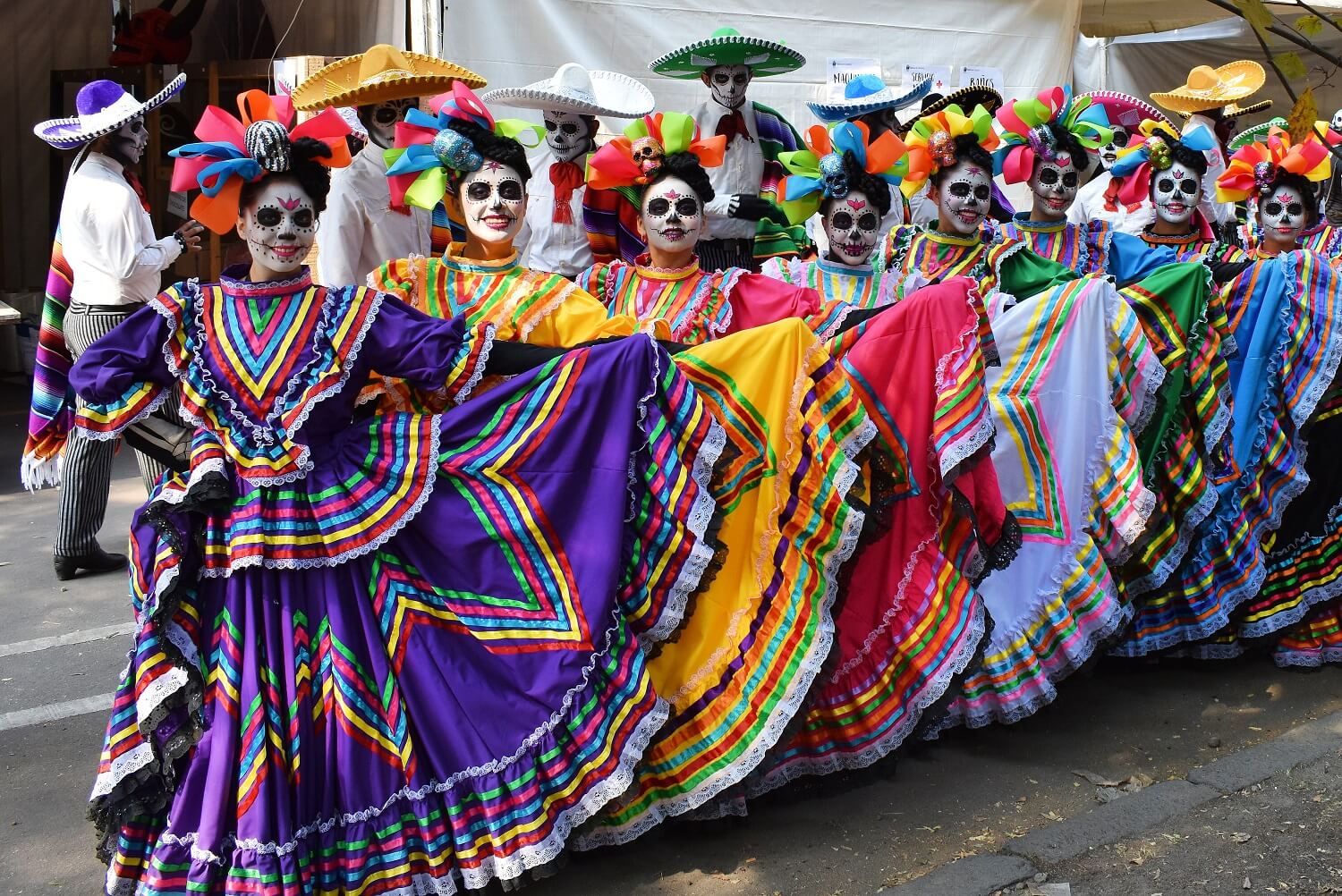
How Is the Day of the Dead Celebrated?
Suppose you’re ready to celebrate the Day of the Dead but aren’t sure how. You should look into the traditions of different regions. Dia de Los Muertos originally began in south and central Mexico before spreading, and other areas have adopted different traditions to celebrate the holiday. However, each region has some similarities in its traditions that you’ll likely recognize.
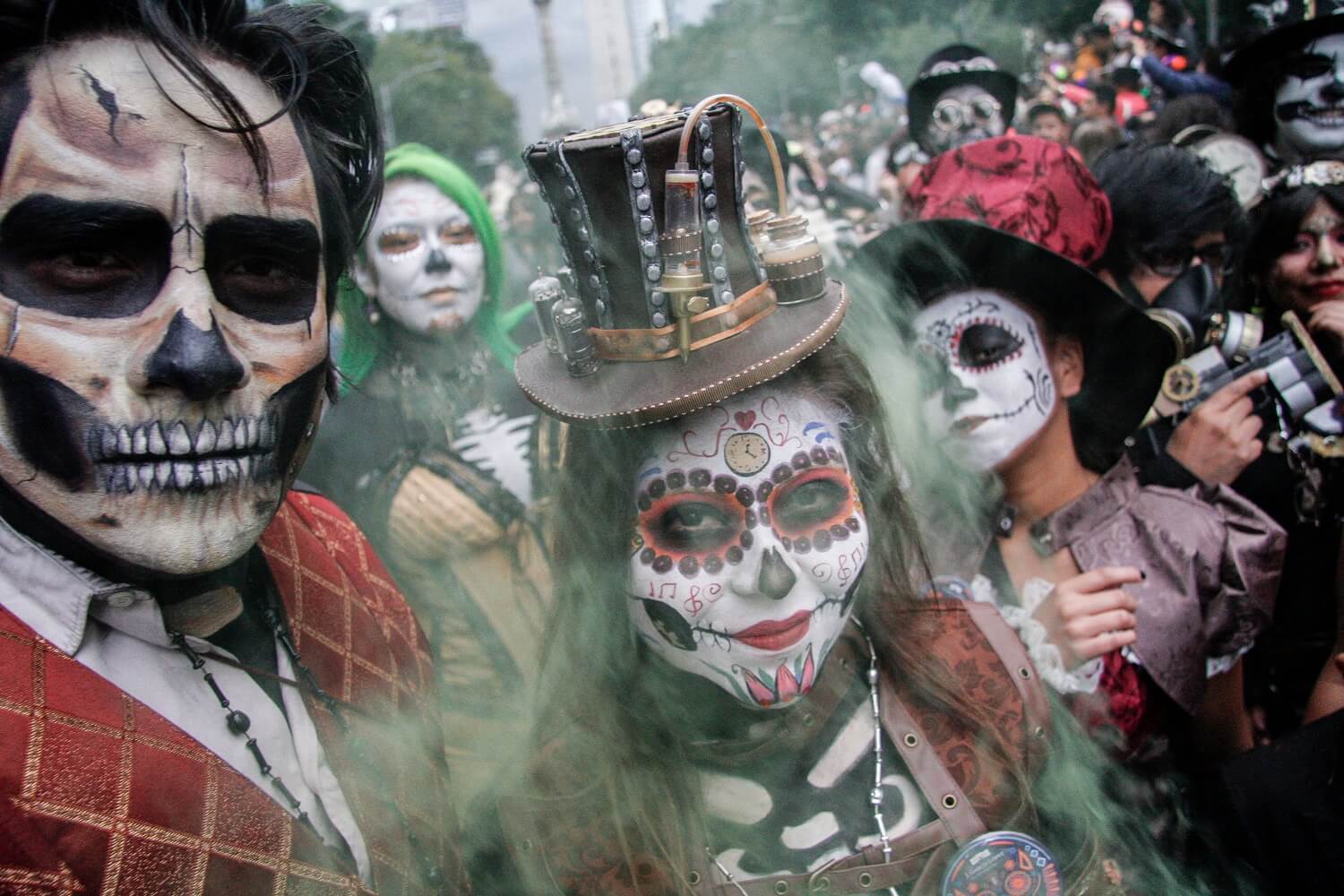
Day of the Dead Celebration and Parade Dia de Los Muertos
Ofrendas: The Heart of the Celebration
Ofrendas (offerings in Spanish) are the centers of celebration during Dia de Los Muertos, where pictures and offerings to departed loved ones are set up in hopes of guiding them to their families. The elements of wind, earth, water, and fire heavily influence the offerings left on the tables.
Earth sustains the spirit through food such as pan de muerto (bread of the dead) and sugar skulls. A water pitcher is left on the table so the departed may drink. The wind is represented by papel picado, delicate paper banners with intricate shapes cut into them to allow spirits to pass through. And candles in the form of crosses represent four cardinal directions to guide the souls through the land of the dead, representing fire.
The table is also decorated with numerous marigolds, a brightly-colored tablecloth, and other decorations to please the spirits and lure them to the ofrenda.
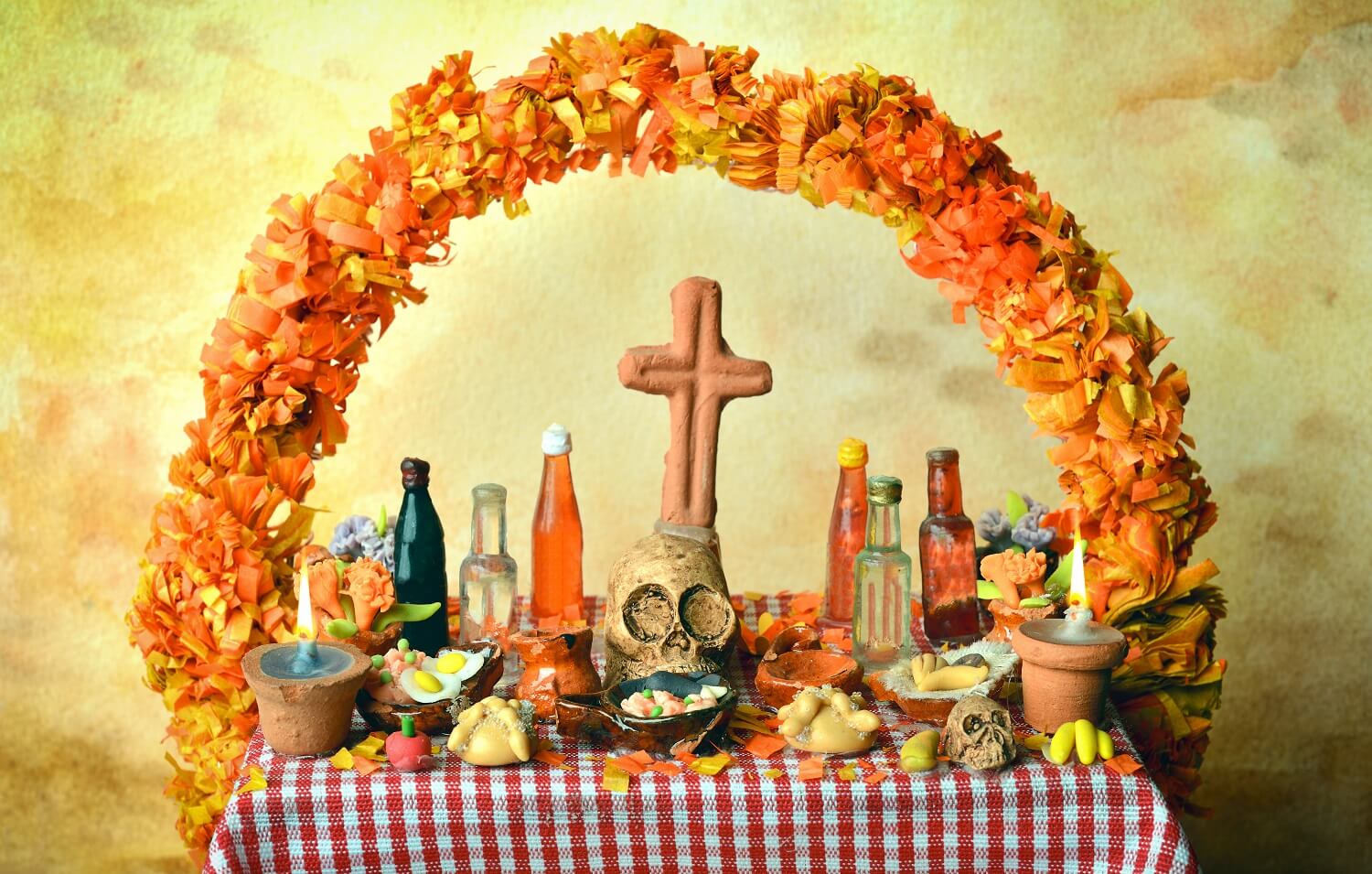
Decorated Ofrenda
Calacas and Calaveras: The Rich Symbolism of Skeletons
One of the first things you think of when you think of the Day of the Dead is probably a richly-colored and festive skull. In other parts of the world, the skull (calaveras) and skeletons (calacas) represent death at different times of the year.
Still, during Dia de Los Muertos, they become a celebratory symbol for the holiday.
The adoption of the skull and skeletons as symbols during Dia de Los Muertos began in 1910 when Jose Guadalupe Posada printed a satirical cartoon of a lady skeleton dressed to the nines in European clothes.
It was a scathing satire of how the Mexican elite adopted European clothing and customs rather than celebrating their heritage. Still, the image reminded people of Mictecacihuatl, the Aztec Queen of the Underworld.
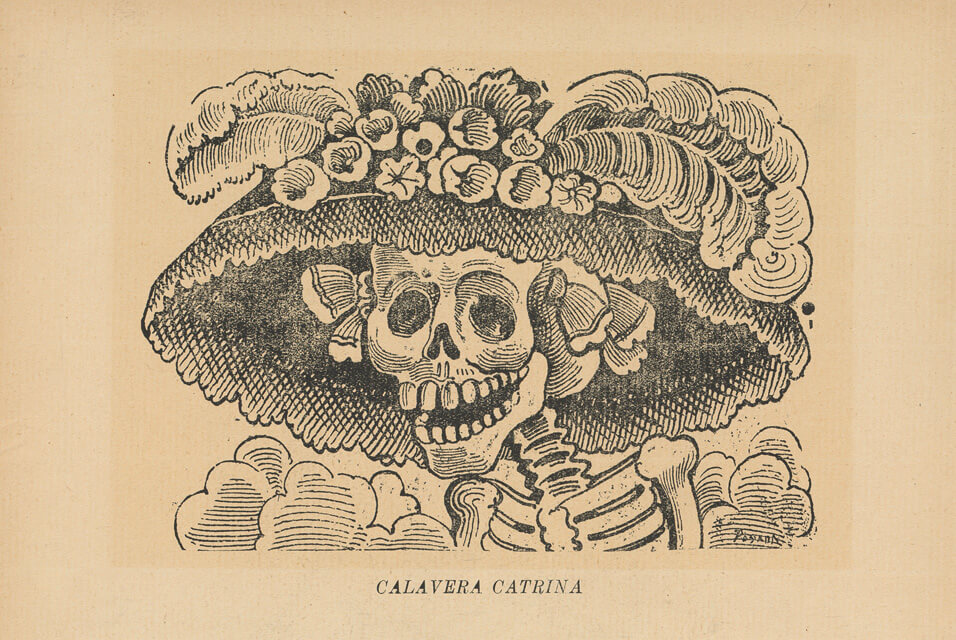
La Calavera Catrina by Jose Guadalupe Posada
The comic was titled La Calavera Catrina, The Elegant Skull. After appearing in a famous mural by Diego Riviera, she became engraved in the public consciousness of Mexico and an integral symbol of the Day of the Dead. Thus, festive sugar skulls and ethereal facepaint have become favorite ways to celebrate Dia de Los Muertos and remain one of the unique traditions of the holiday.
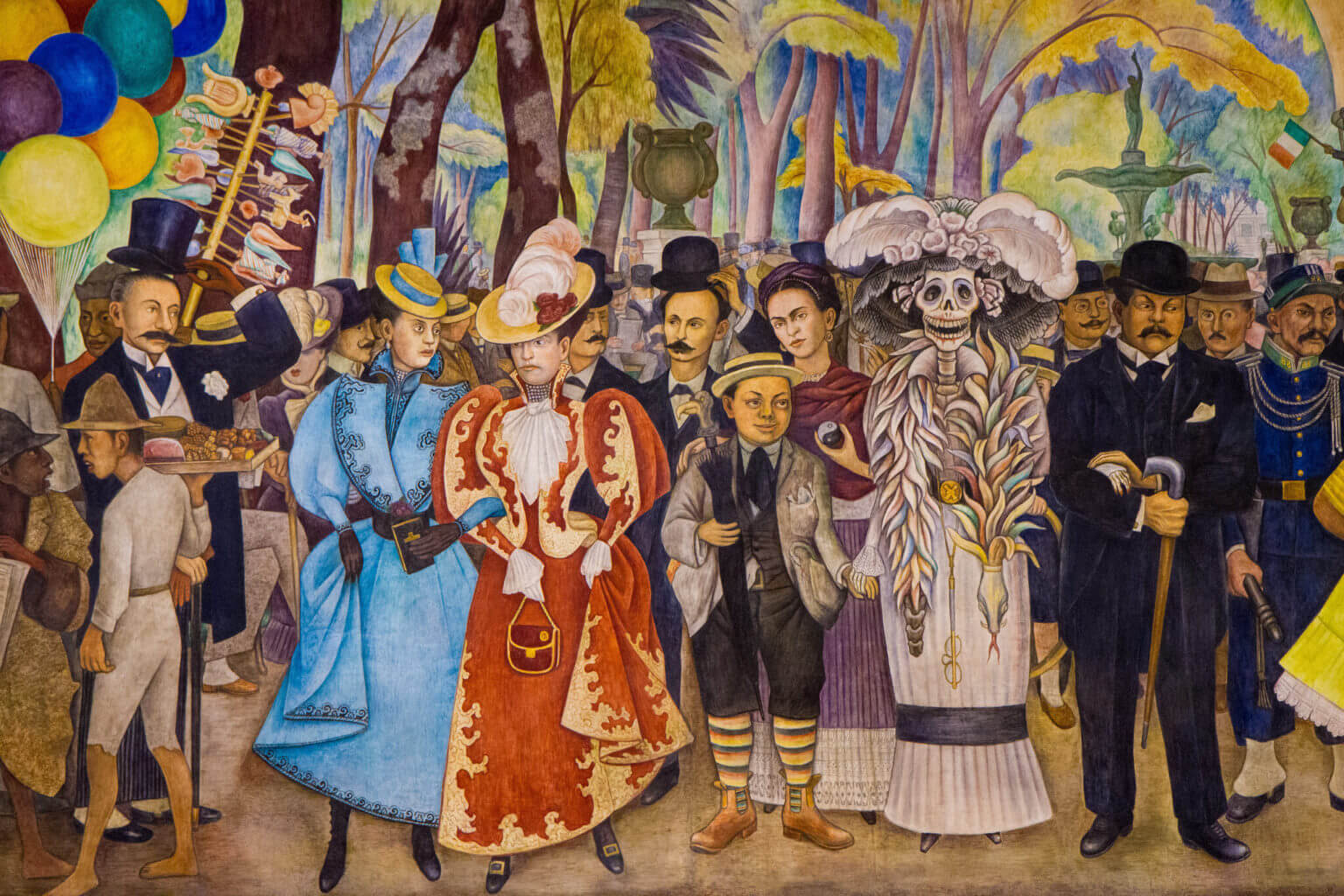
The mural features La Calavera Catrina, Diago Rivera as a boy, and his wife Frida Kahlo.

La Cavavera Catrina famous mural by Diego Riviera
Flor de Muerto and Mariposas: Leading the Dead to the Living
Marigolds are the flowers you see lining the streets and adorning ofrendas. Known as flor de muerto (flower of the dead), the marigold represents the fragility of life and how everything fades away, then returns in cycles.
It’s said that the scent of marigolds and their petals helps lure in spirits, which is part of the reason they’re so ubiquitous during the Day of the Dead.
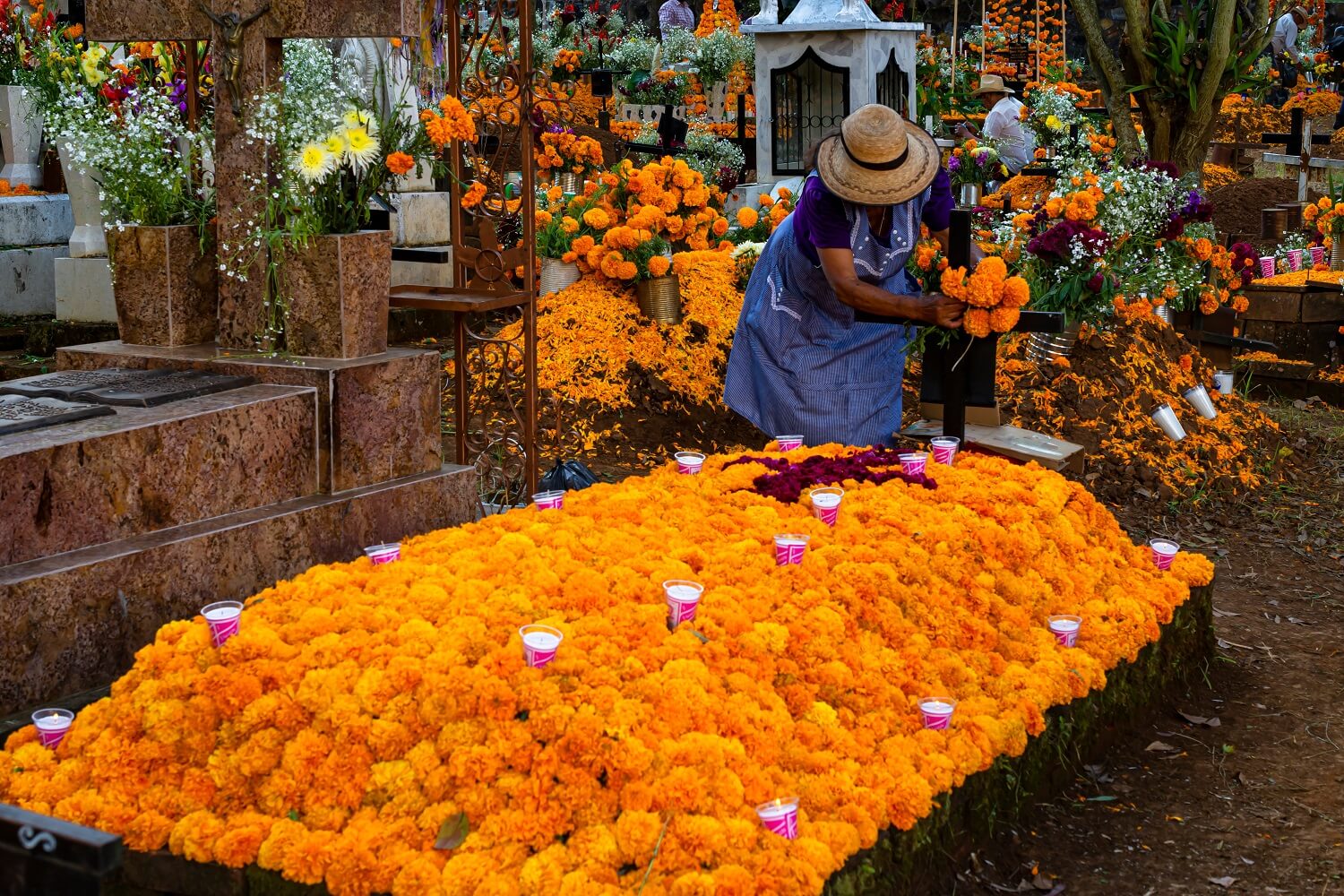
Lady decorating grave with marigolds (cempasúchil) flowers on the day of the dead in Michoacán, Mexico.
Monarch butterflies serve a similar purpose. You’ll see butterfly symbolism alongside sugar skulls and other symbols of the departed. The butterflies return to Mexico on November 1st, so it’s believed they deliver the souls from the land of the dead just in time for the holiday.
These two symbols also unintentionally set the color palette for much of the activities surrounding Dia de Los Muertos, with the colors of yellow and orange the predominant colors for the festivities, making this holiday vibrant and full of life most holidays that celebrate death lack.
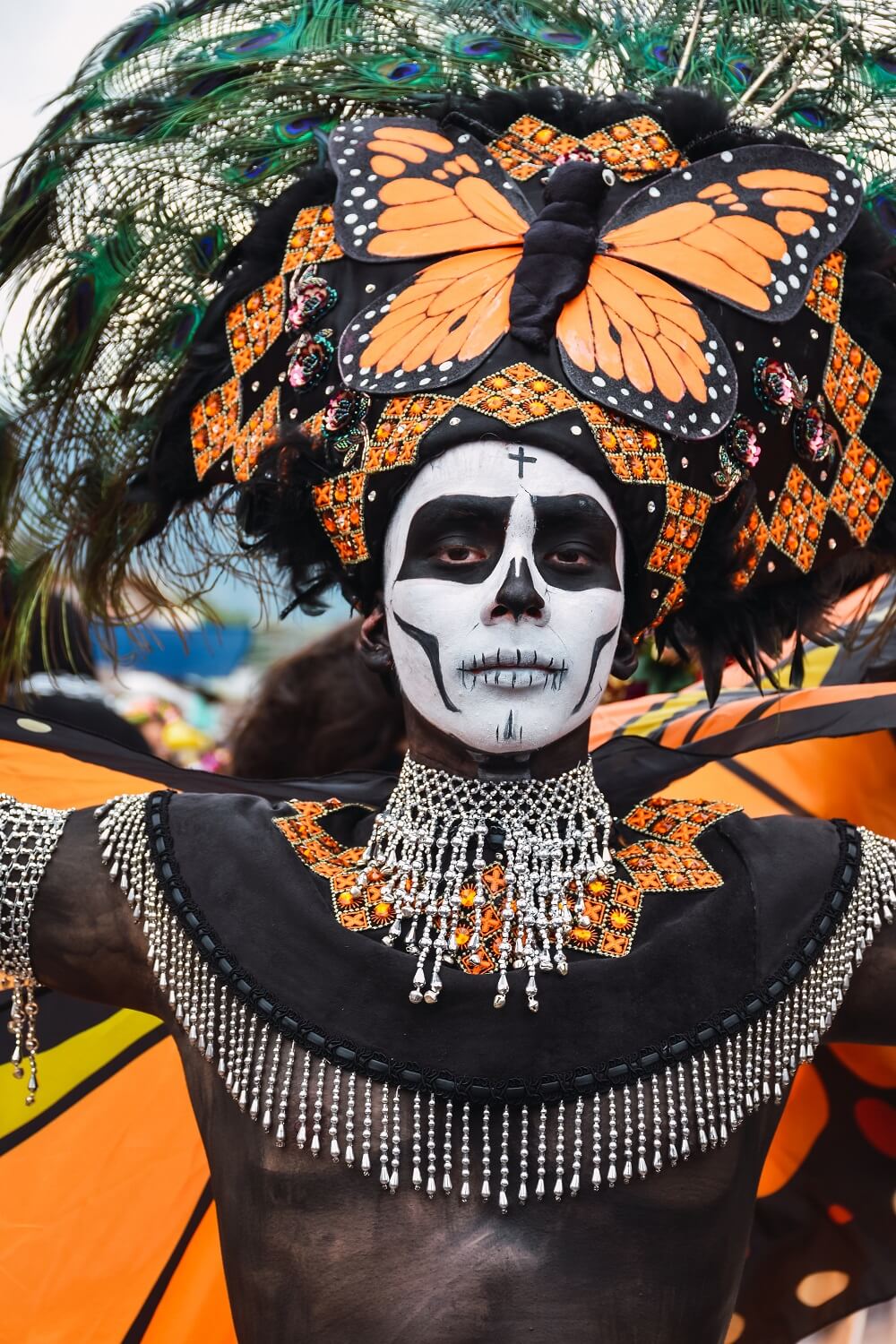
Monarch Butterfly Skull Costume Day of the Dead
History of Dia de Los Muertos
Dia de Los Muertos has a long and storied tradition that reaches back three thousand years, to when the Aztecs and other Mesoamerican people had month-long celebrations to honor the dead.
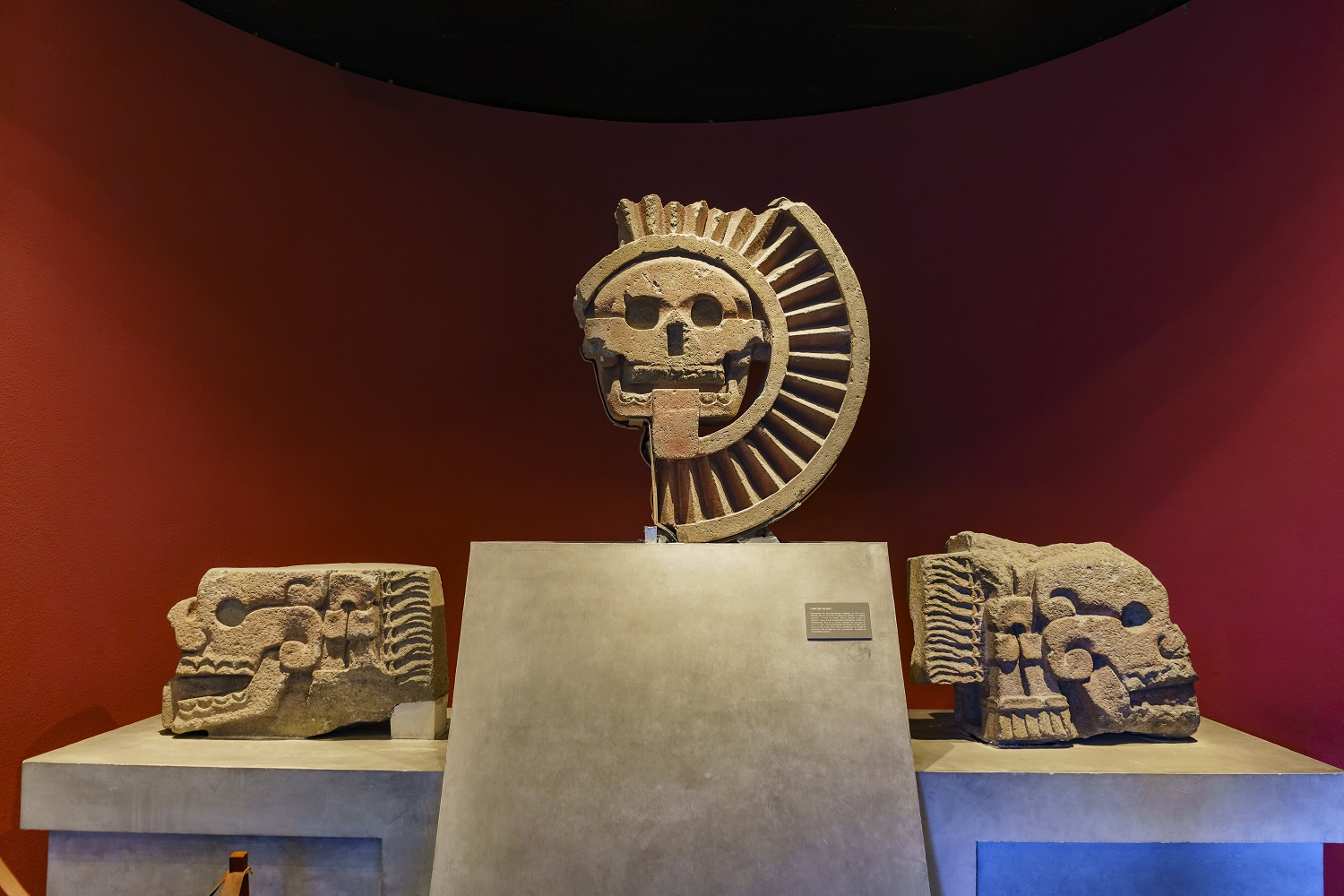
Disk of Mictlantecuhtli God of the Underworld – Museo Nacional de Antropologia, Mexico City.
Ancient Mesoamerican Traditions
The Aztecs had a more cyclical view of death than modern people do. They believe that life and death are natural cycles and that life springs from death and vice versa.
After a person died, they’d go to the land of the dead. They would undergo an arduous journey through Chicunamictlan, the trials of the afterlife, to reach their final resting place of Mictlan, where they could rest eternally.
There were certain months when the spirits of the departed could visit their families, and their families would give them provisions and tools in the form of offerings to help them on their journey.
You can easily see the parallels between the celebrations hosted by the Aztecs and many other indigenous people and the modern holiday of Dia de Los Muertos. Still, the holiday has also been heavily influenced by Catholic beliefs when conquistadors began to subjugate Mesoamerica.
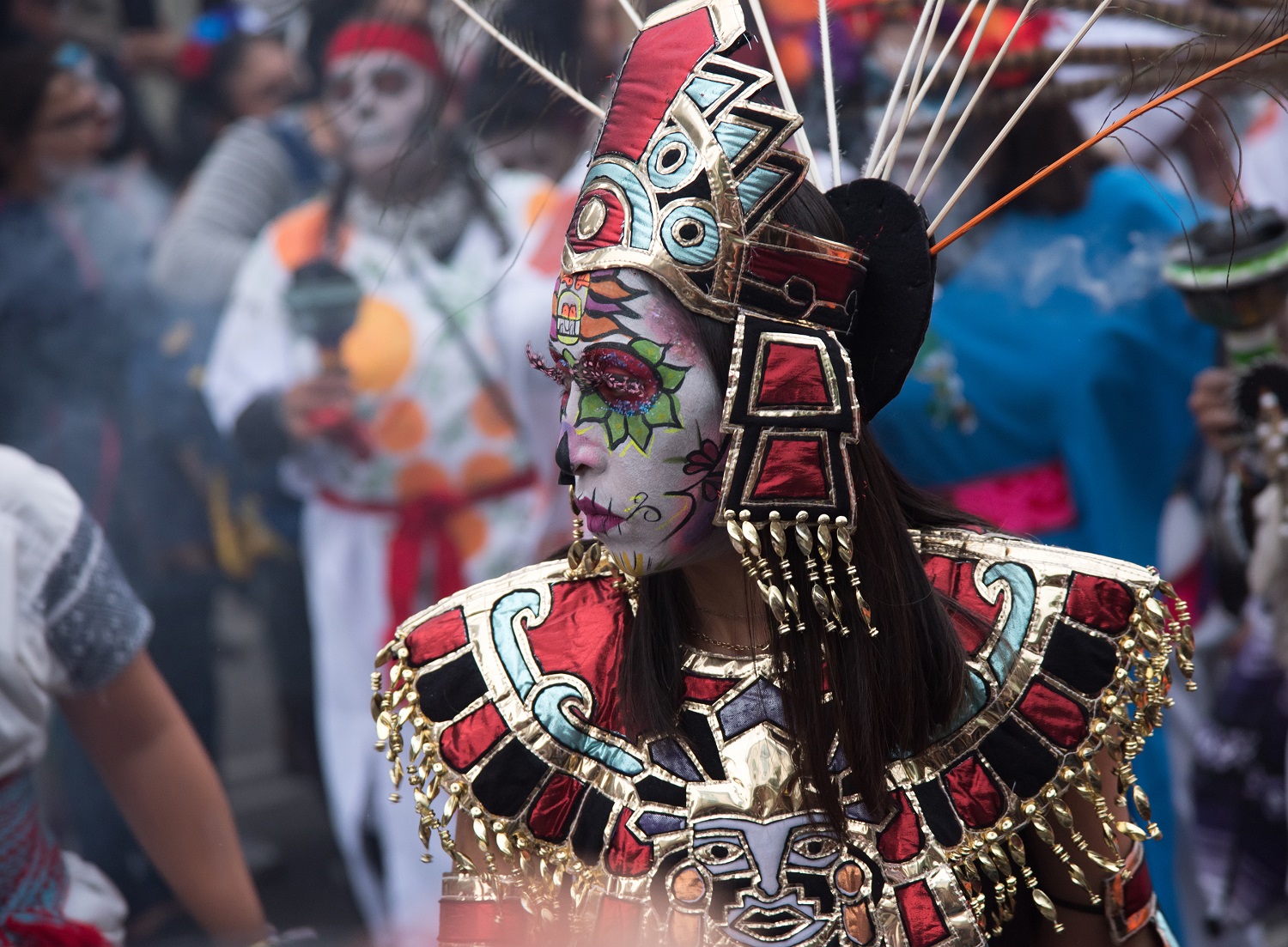
A more Traditional Mexican Dia de Los Muertos Costume.
All Saints Day and All Souls Day
There’s a reason that Halloween and Dia de Los Muertos occur during the same time of year. Dia de Los Muertos is not “Mexican Halloween,” as the two holidays have different roots. But to say they have nothing to do with each other is not necessarily true.
Halloween originates in Celtic traditions, adopted by the Catholic church on two special days of the year: All Saints Day on November 1st and All Souls Day on November 2nd.
Catholic Spanish conquistadors who celebrated these holidays conquered Mesoamerica and imposed these holidays on the locals. The conquered peoples responded by celebrating the holiday with familiar traditions, namely those during the month-long death celebrations they were no longer allowed to have.
Thus the two-day Dia de Los Muertos celebrations were born, although they weren’t commonly practiced by most of Mexico and Central America until the 1980s.
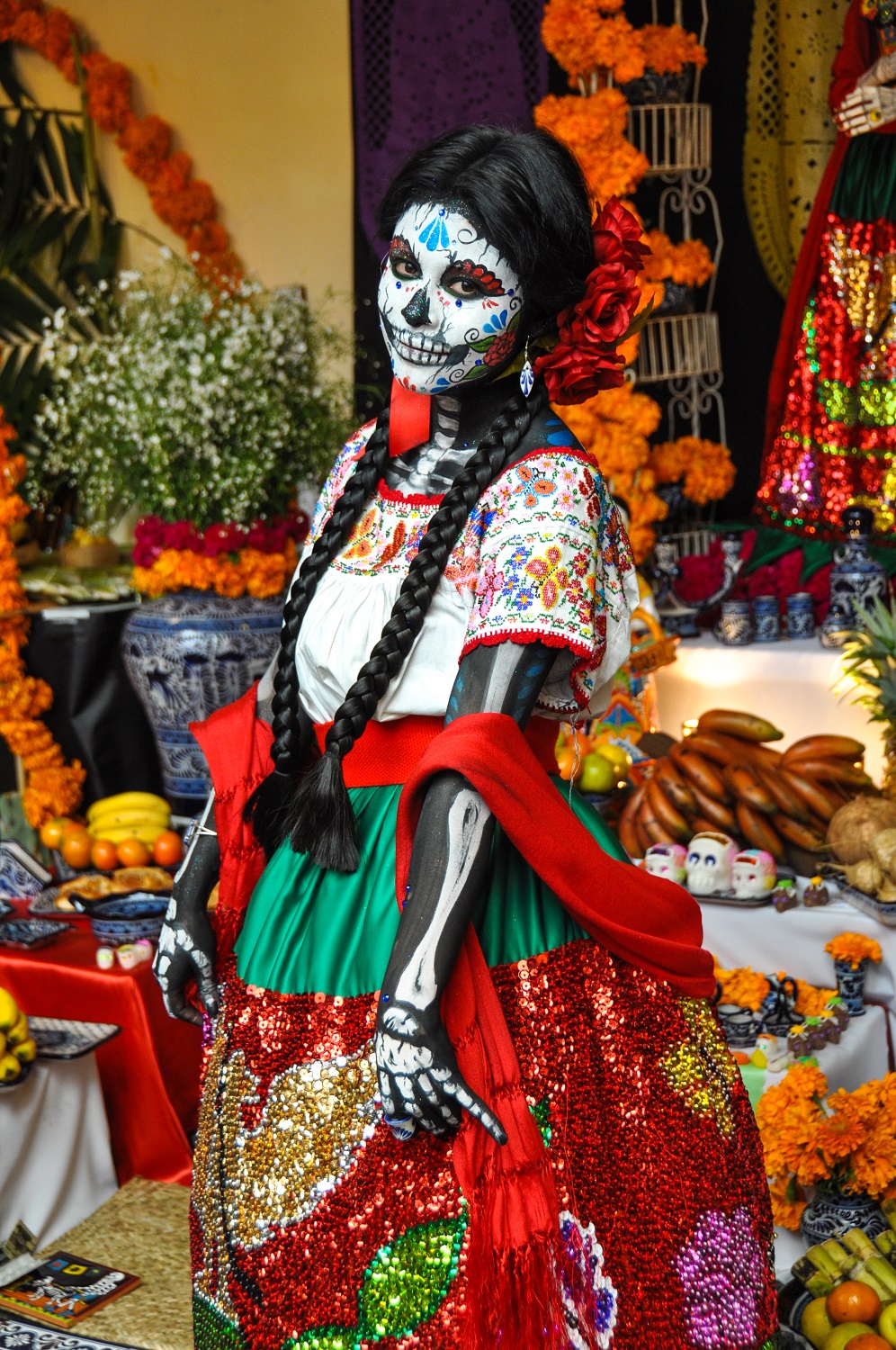
The Rising Popularity of The Day of the Dead
Mexico’s government began to try and cement a national identity around the 1980s. This was when Dia de Los Muertos started to rise in popularity, encouraged by the government, as a Mexican celebration and holiday.
The holiday continued growing in scope, and soon it was commonly celebrated throughout Mexico. Still, even then, it took much longer to cement itself as a celebration that was global in scale. UNESCO only added Dia de Los Muertos to its Intangible Cultural Heritage of Humanity register in 2008.
Since then, the Day of the Dead has been featured in tons of popular media, like the Bond film Spectre, the animated movie Coco, and dozens of parades and festivities throughout Mexico, Mesoamerica, and the United States.
Now that Dia de Los Muertos has been established within the popular consciousness, it’s hopefully here to stay, with its themes of life, death, and warm celebration.
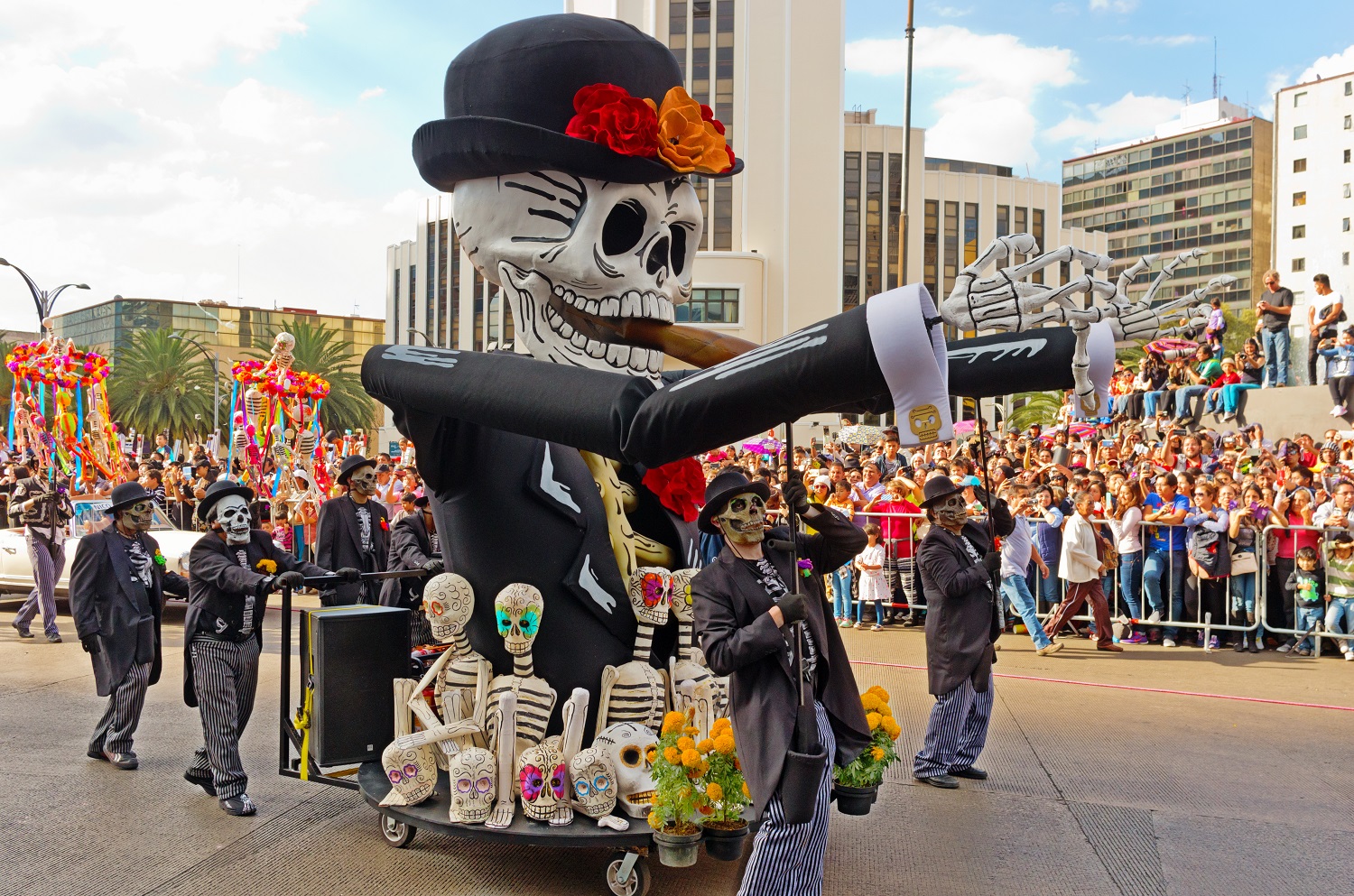
Day of the Dead – Dia de Los Muertos Parade, Mexico City.
James Bond Film SPECTRE Features Day of the Dead festival
Day of the Dead Gallery:
Parade Floats, Decorated Altars & Costumes
Enjoy scrolling through this gallery of Day of the Dead images celebrating Dia de Los Muertos. You will recognize some of the props from the James Bond Film: Spectre.
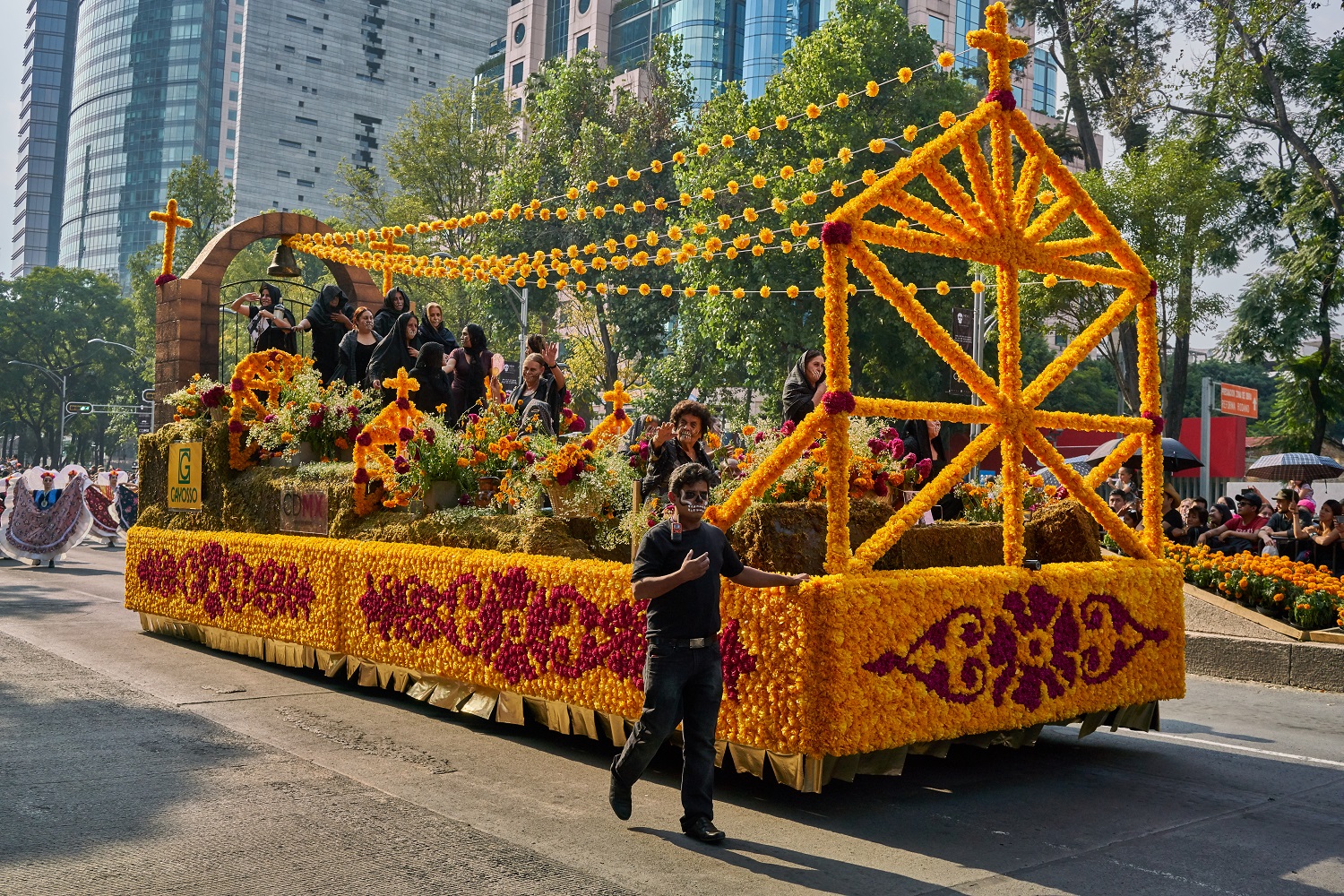
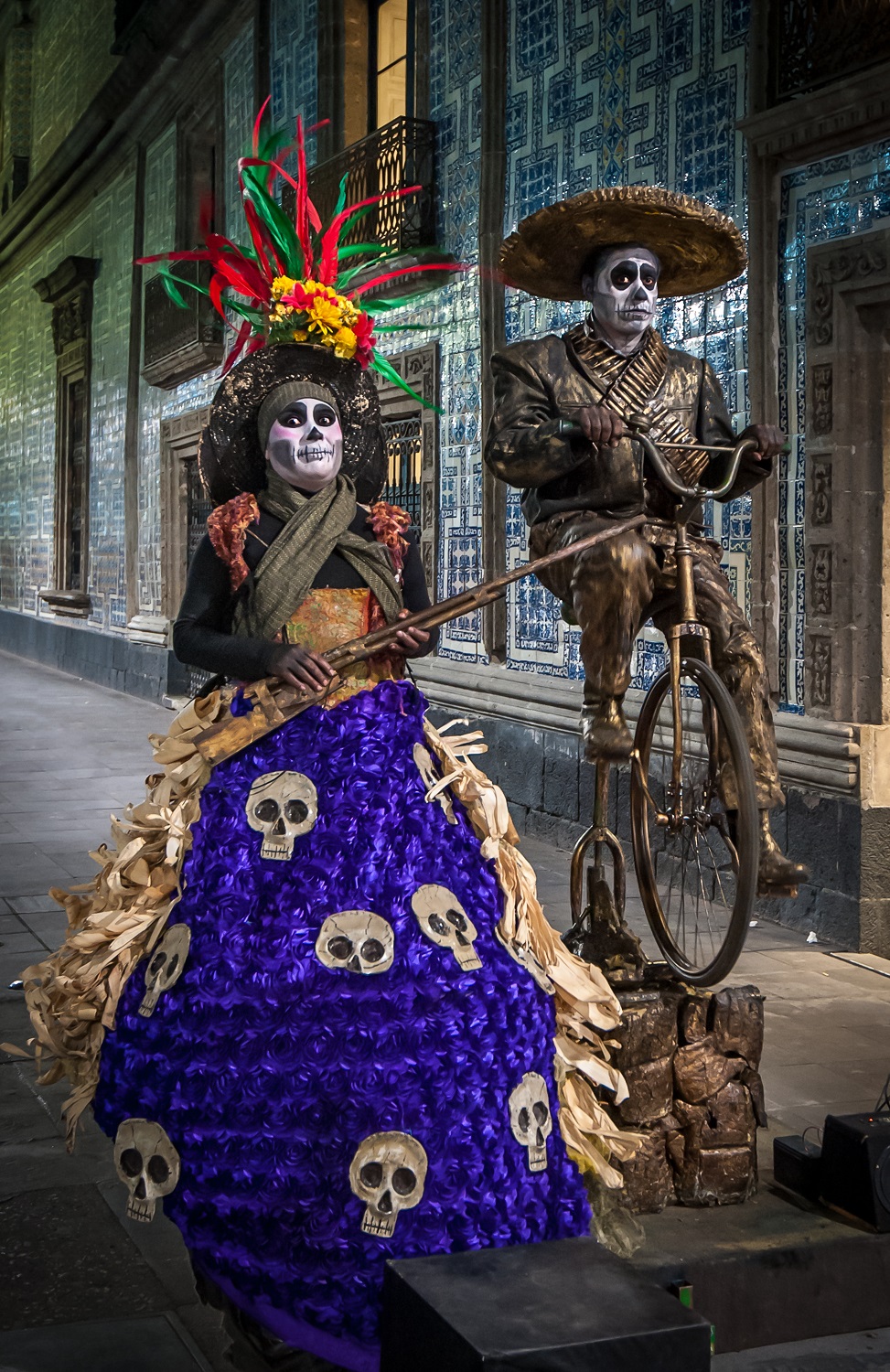
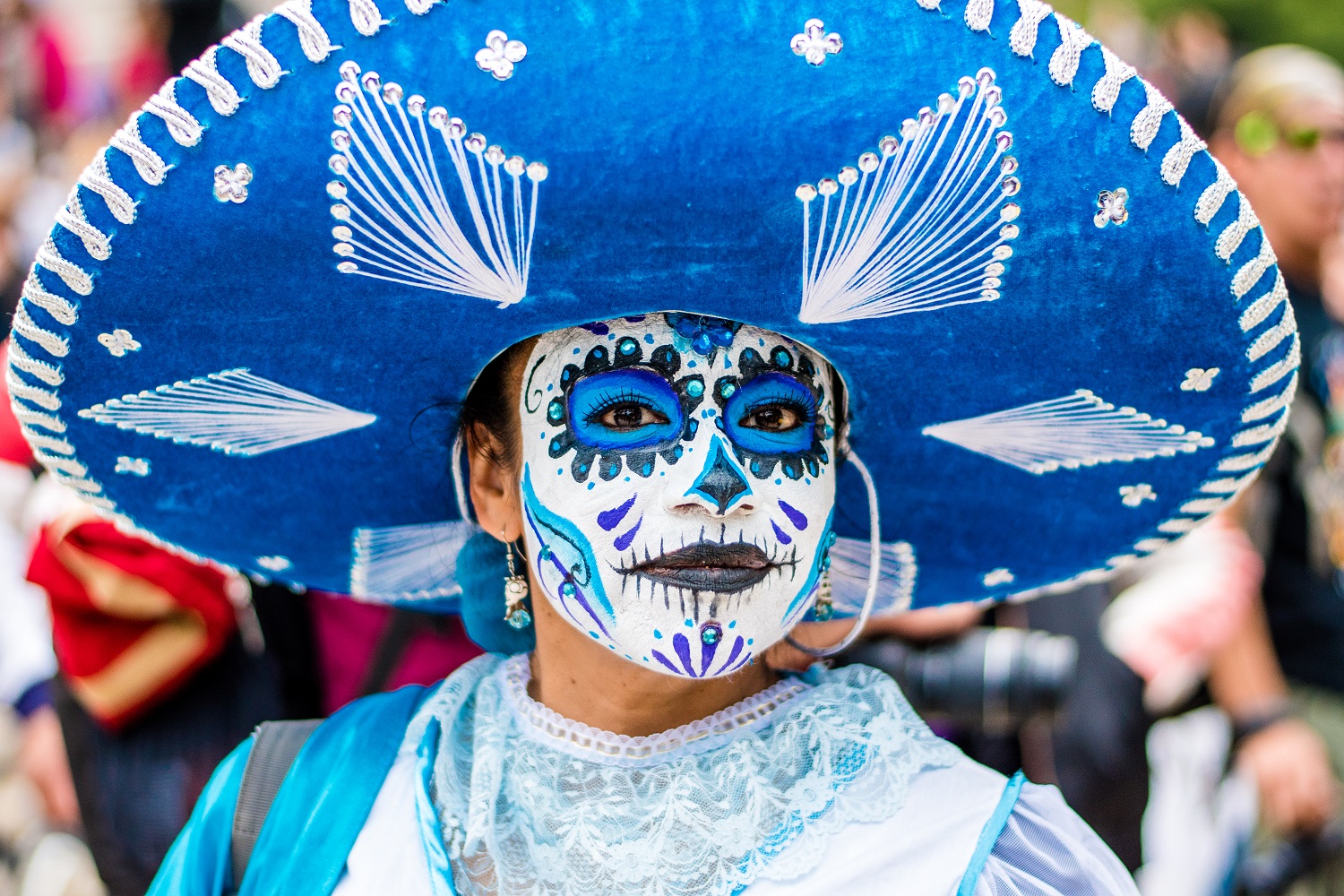
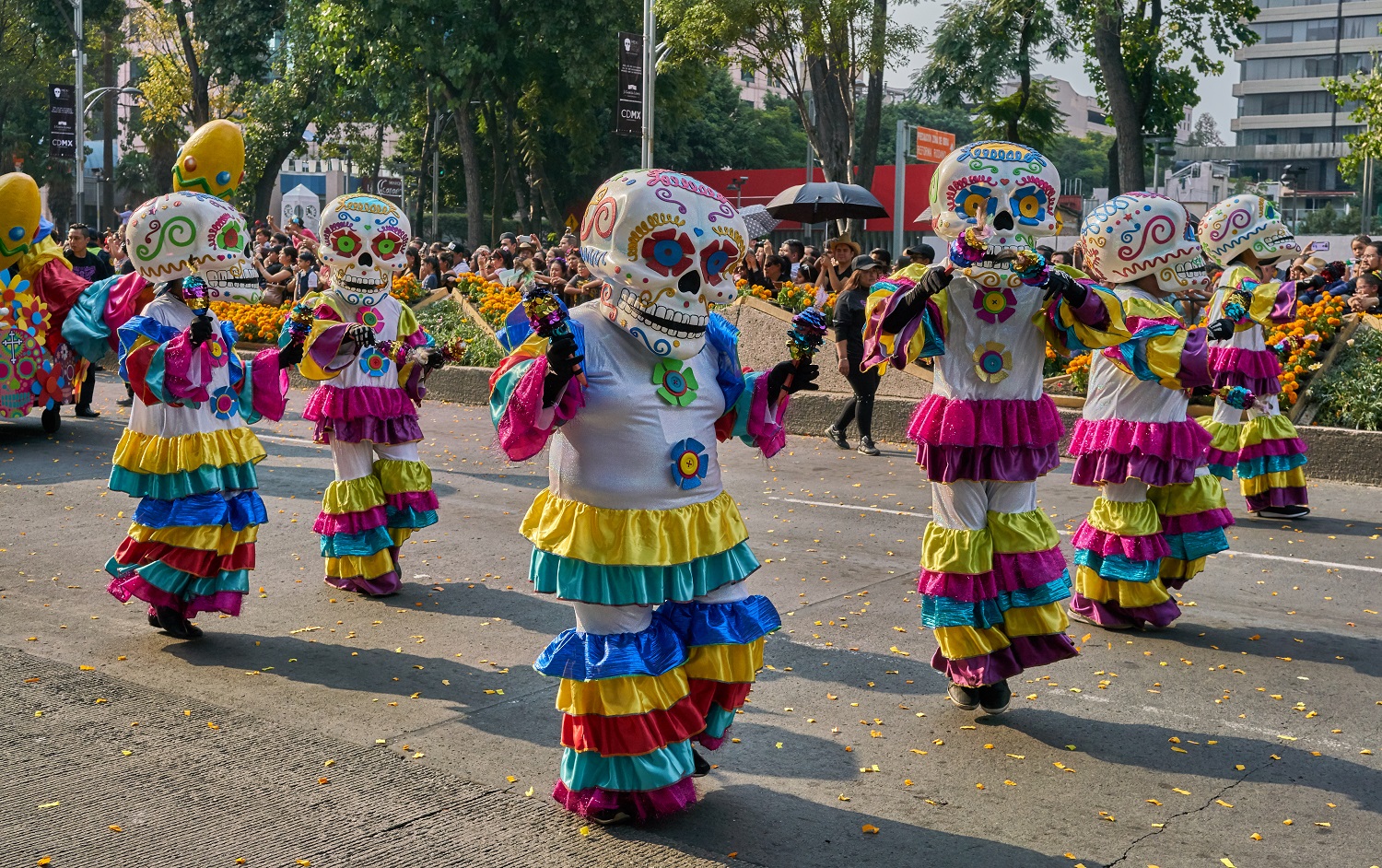

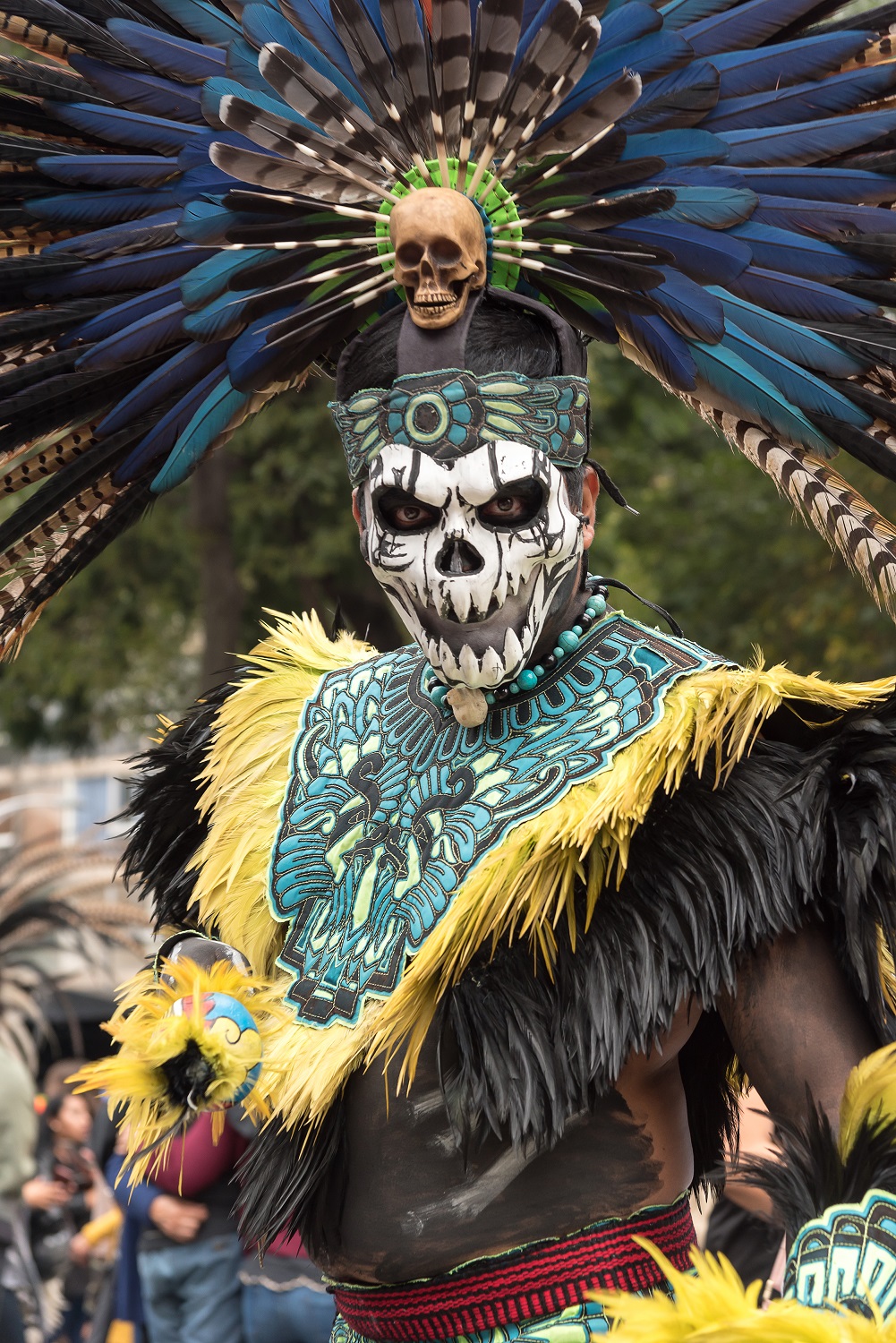
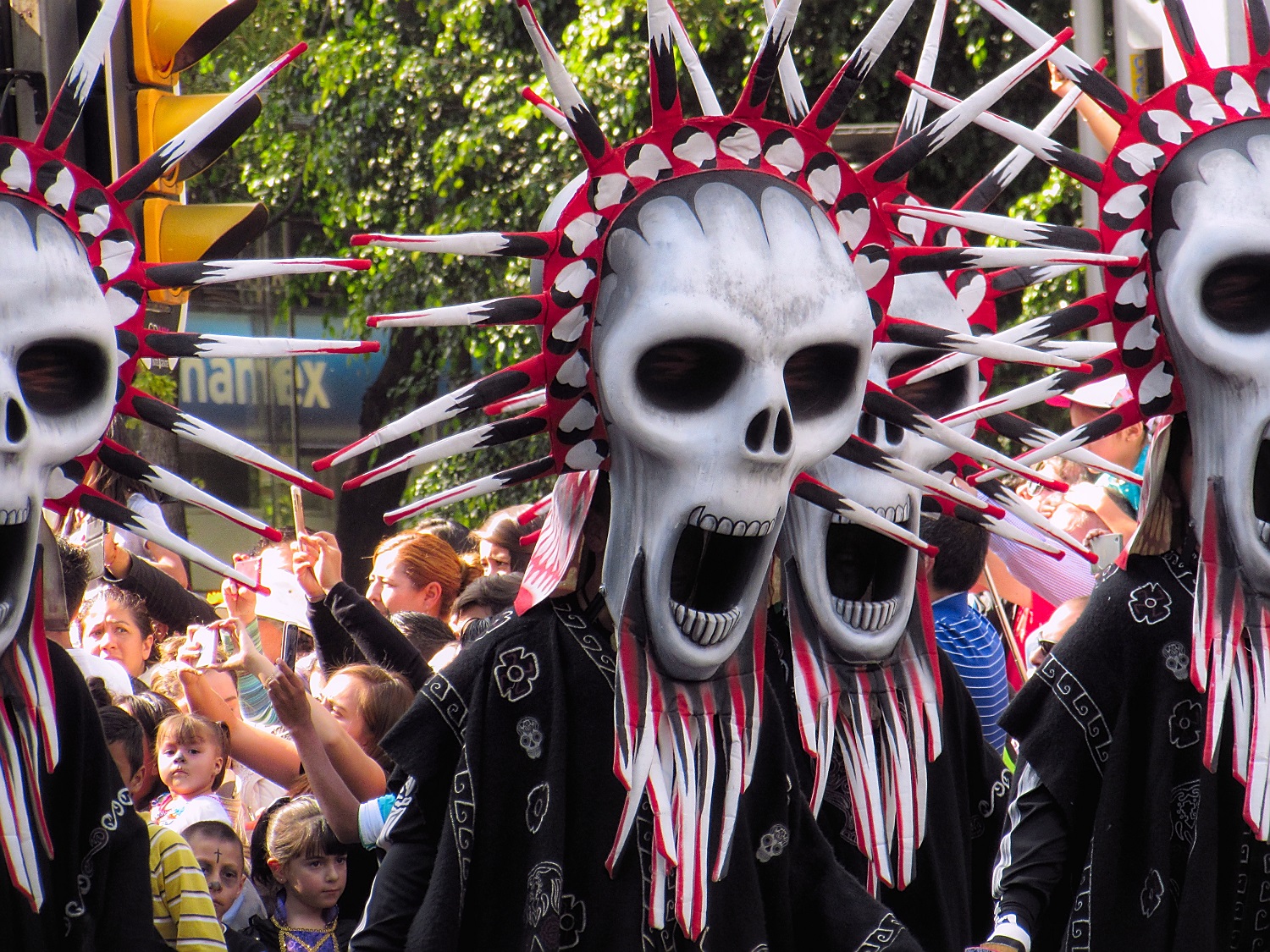
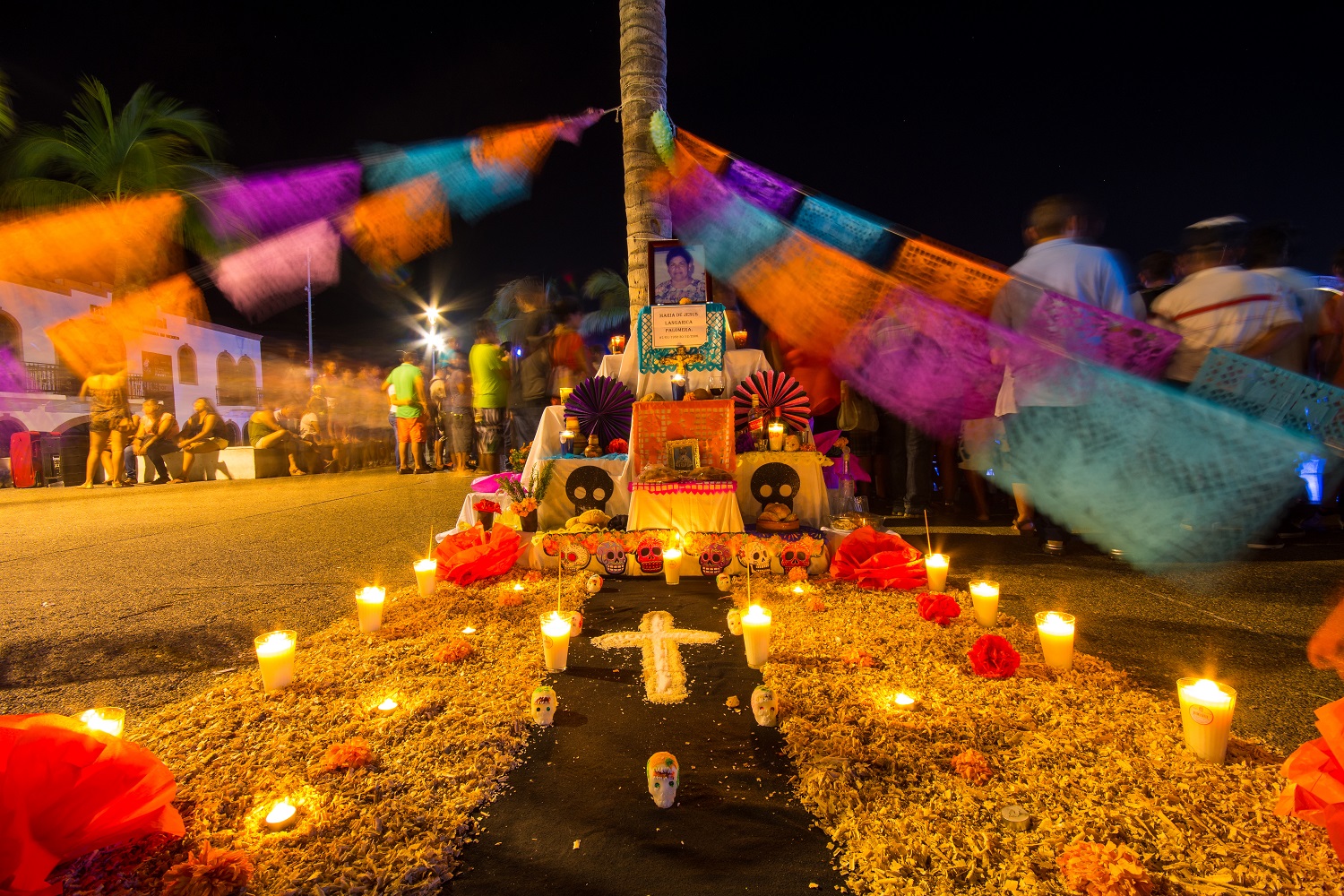
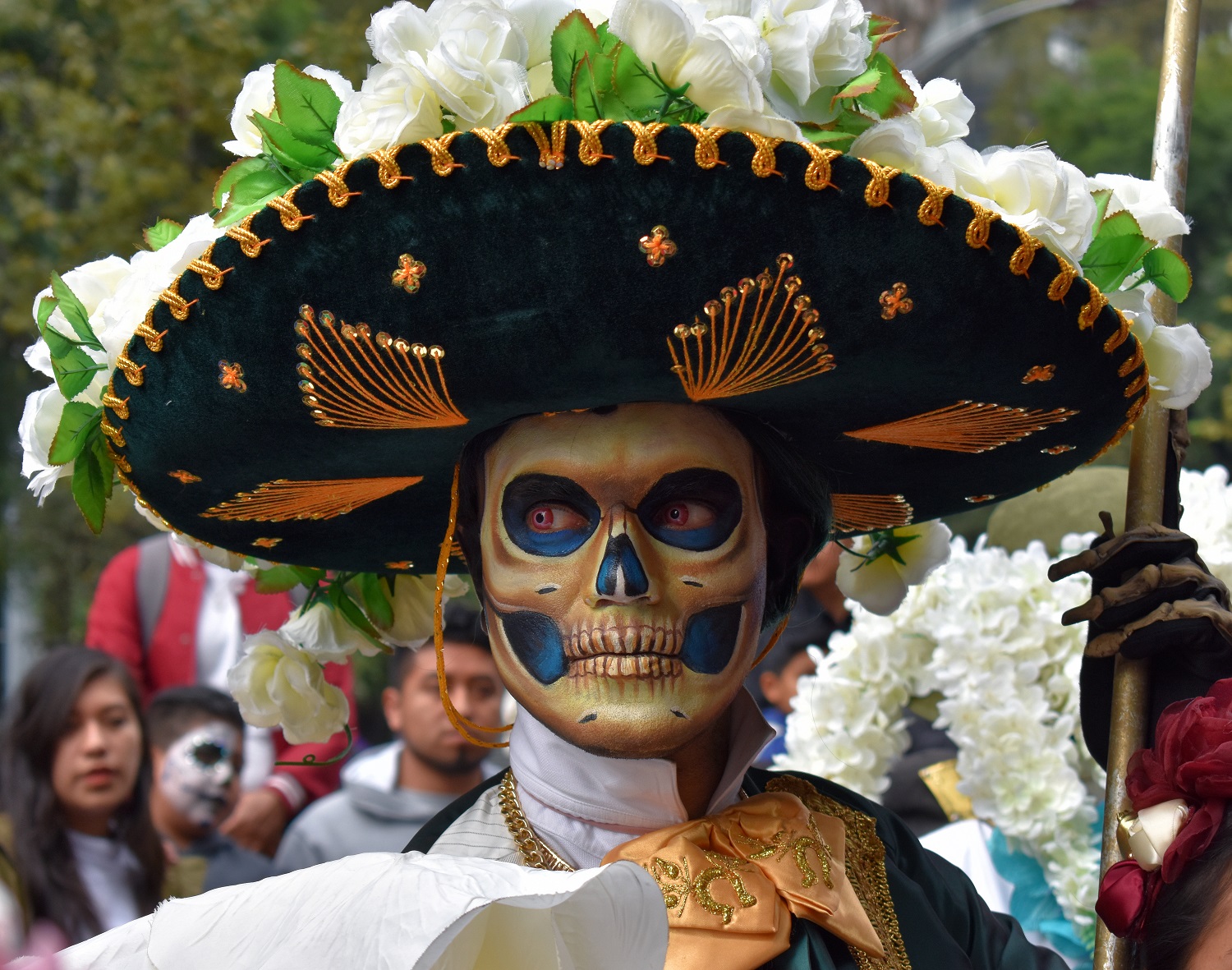

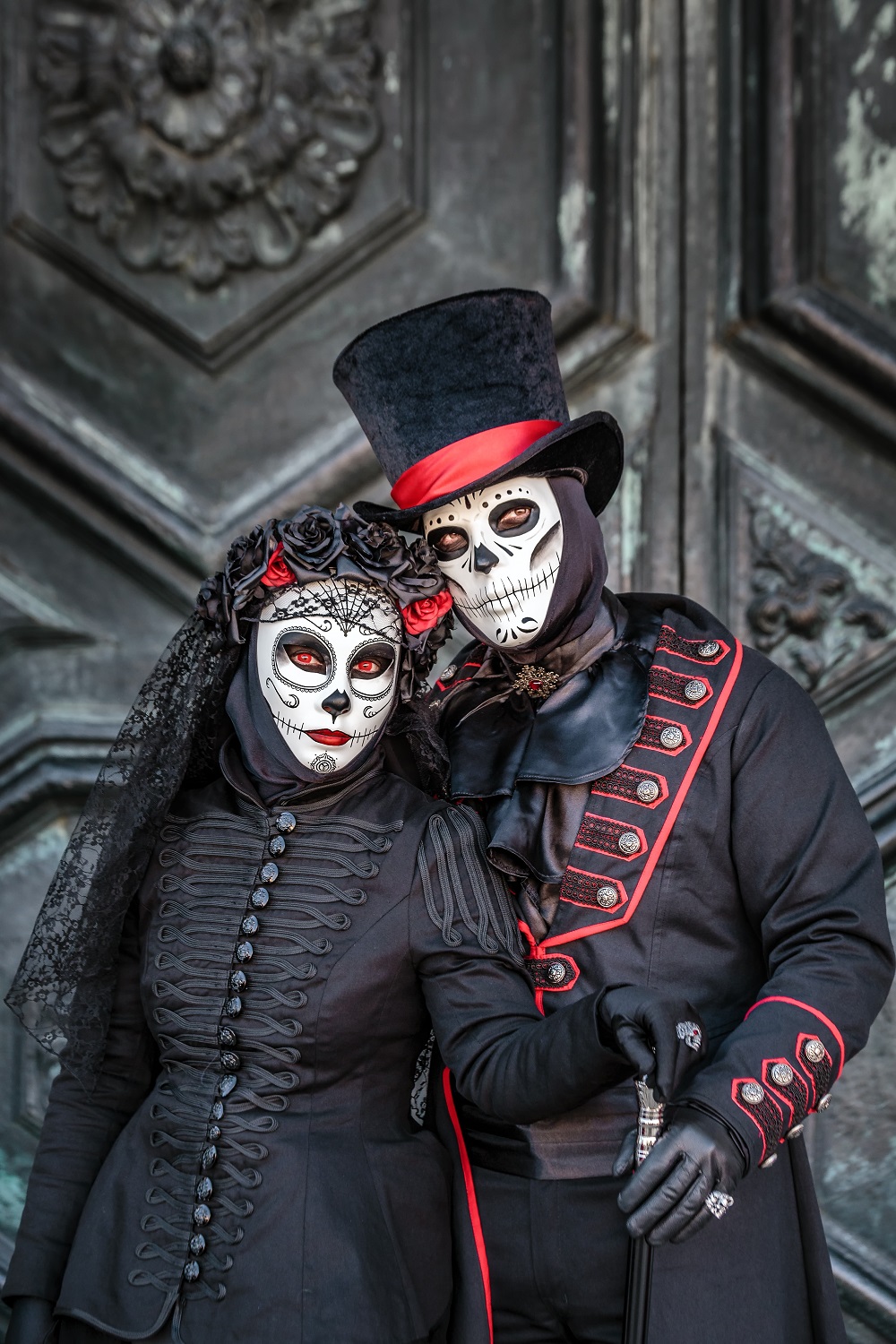
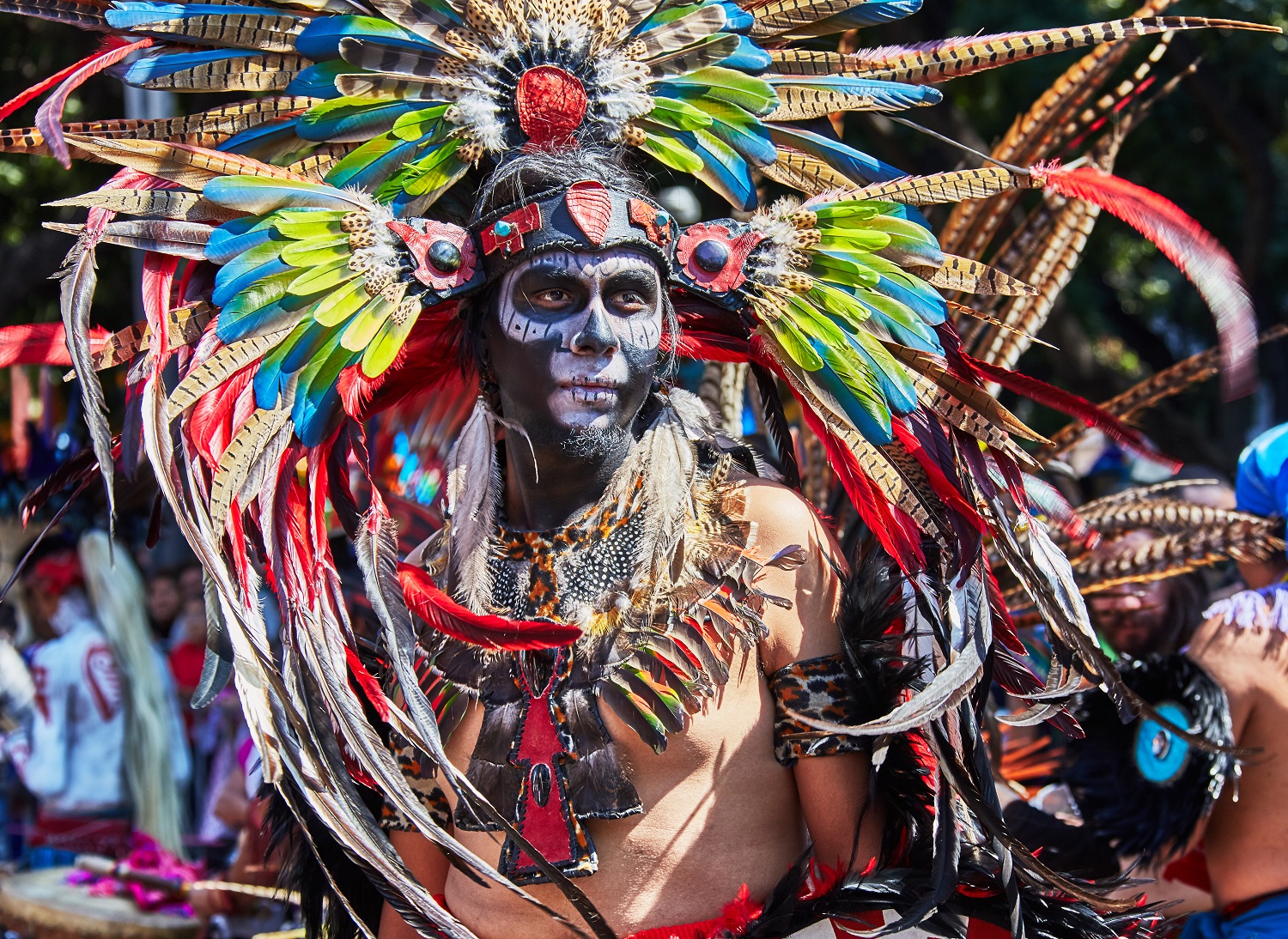
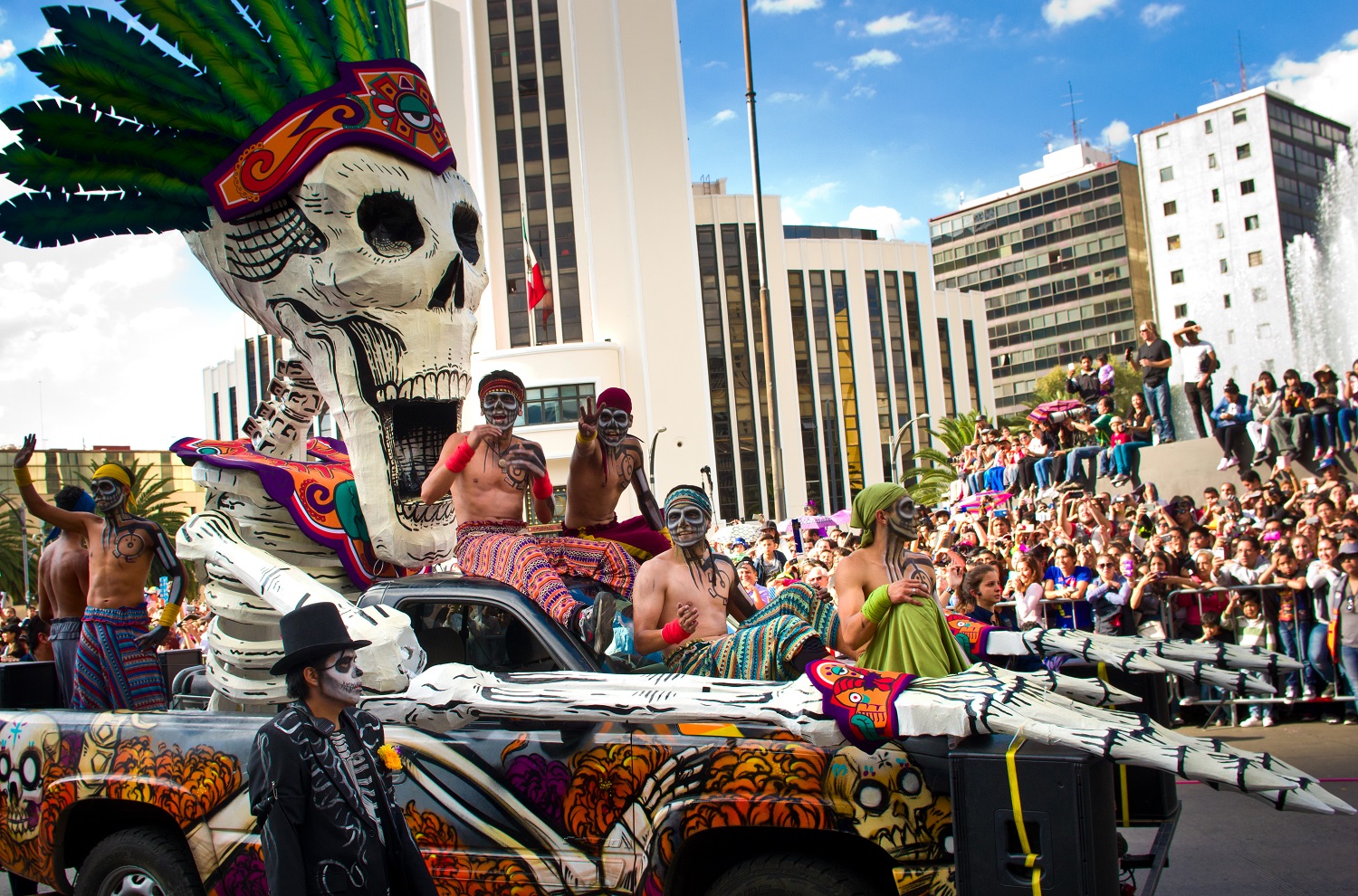
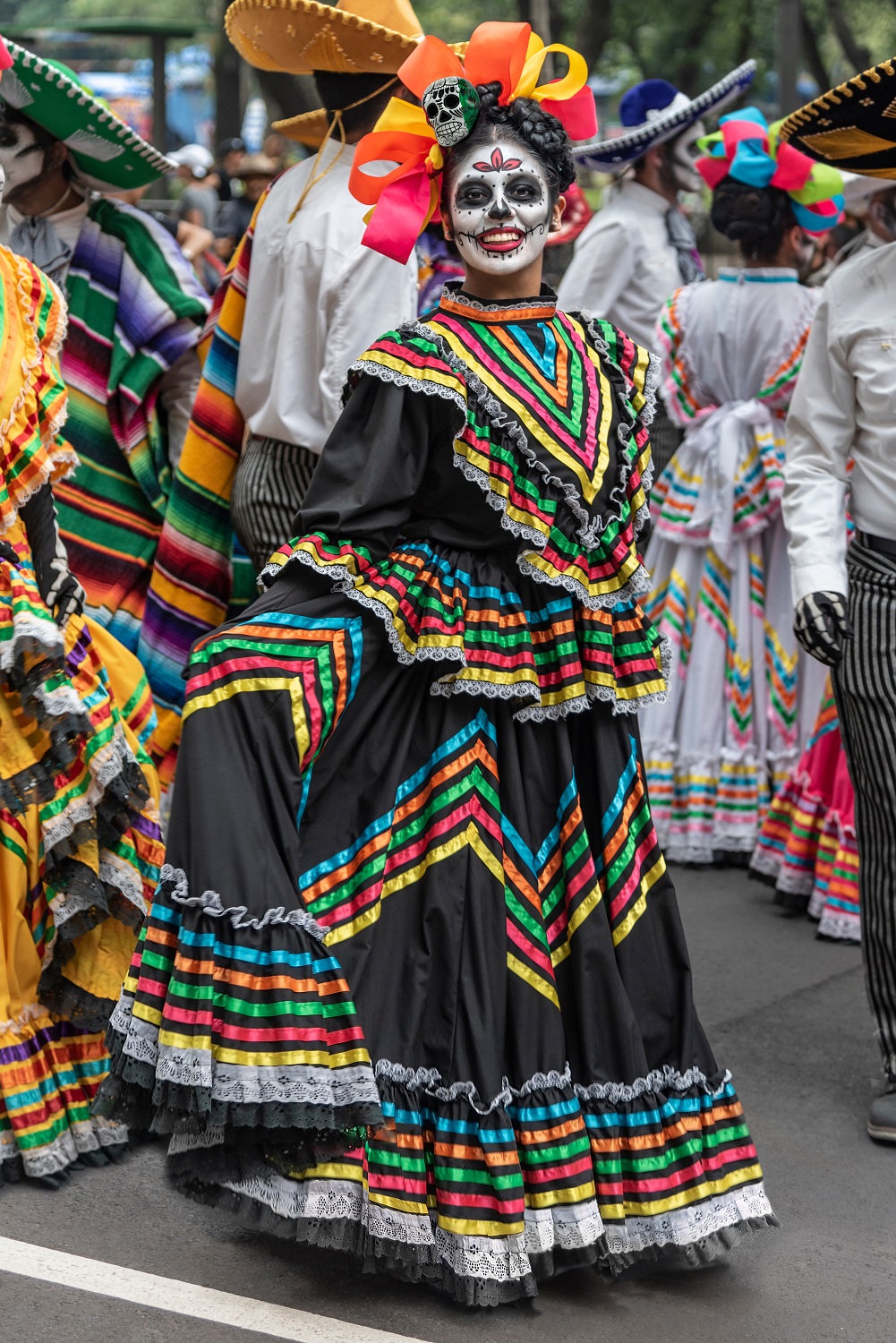
Celebrating The Cycle of Life and Death: Dia de Los Muertos
Dia de Los Muertos is a holiday that doesn’t mourn loved ones or has spooky or somber themes. Instead, the holiday celebrates that you can still remember the loved ones and friends who’ve left this world behind for the next and allows you to reminisce with them.
It’s colorful, lively, and one of the most unique holidays in the world, where death is seen as something to celebrate rather than fear. It’s reflected in the vibrant traditions that reach back to the indigenous peoples who first celebrated Dia de Los Muertos.
Please Share & Comment!
We hope you enjoyed learning about the Day of the Dead – Dia de Los Muertos. Please feel free to leave a comment below and share this post with your friends and family. We will continue to add fun and interesting content. So make you Subscribe to Mad Halloween for all the latest updates. Thank you so much for stopping by and make sure to visit our Halloween Shop and view more Blog Posts!


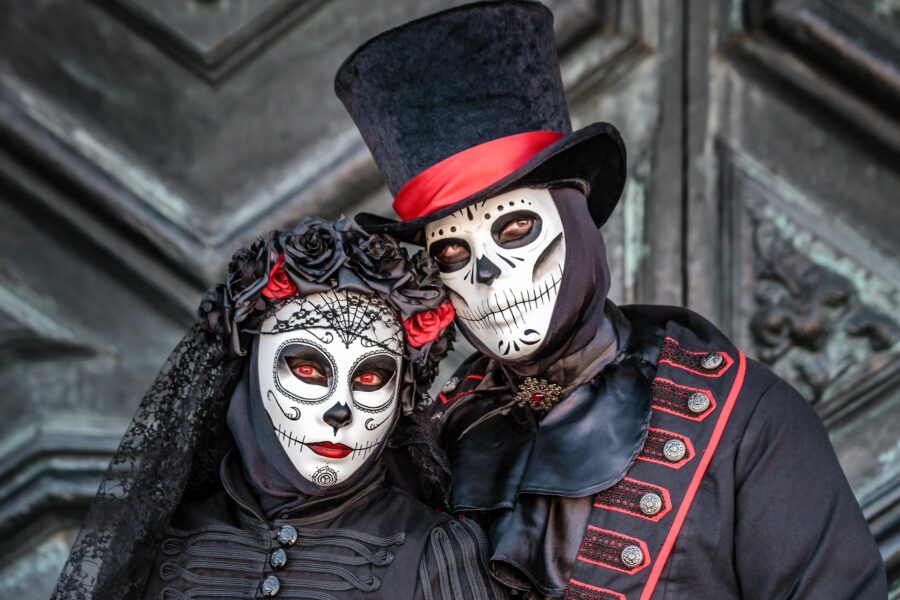
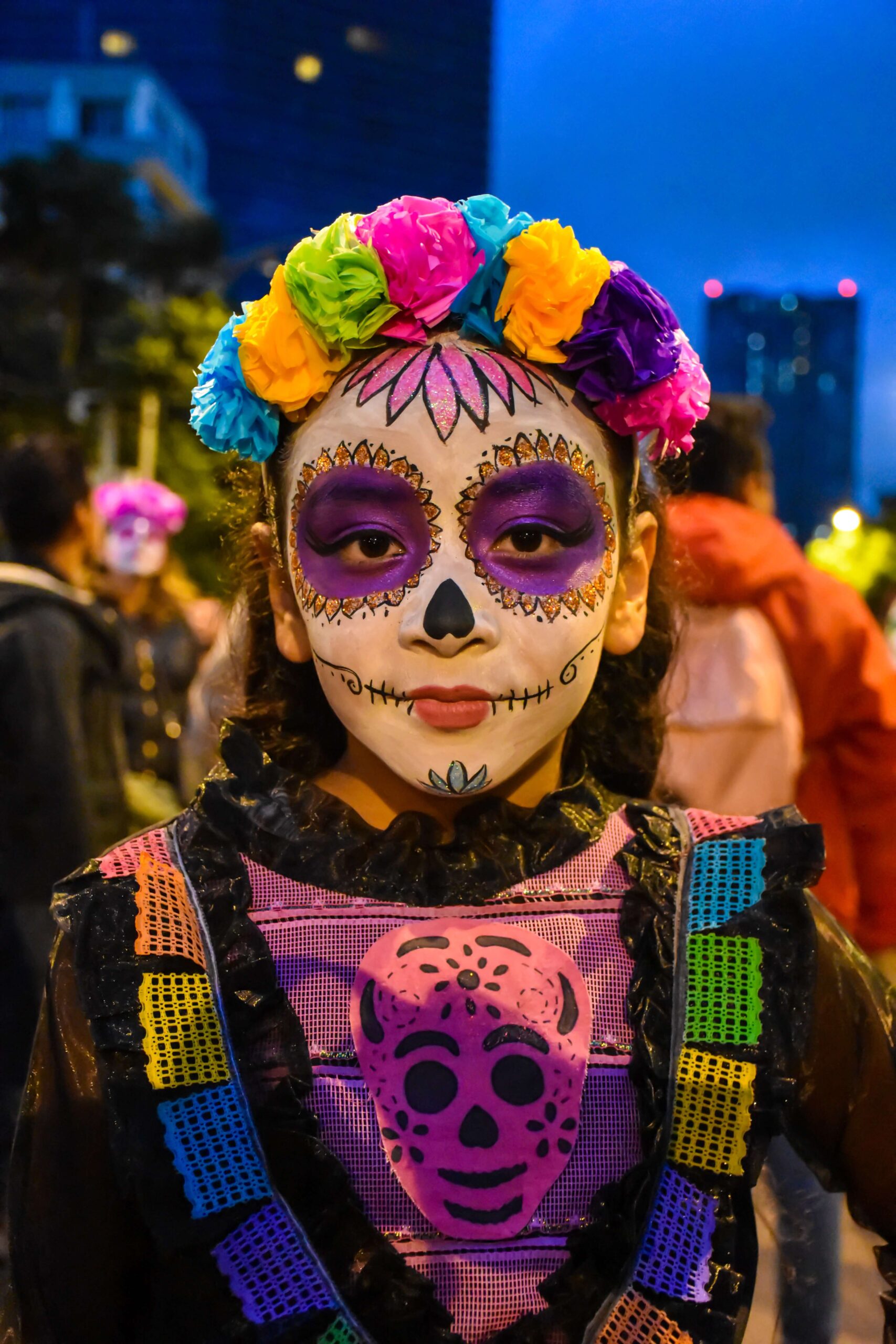

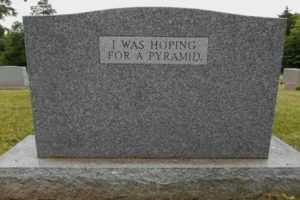
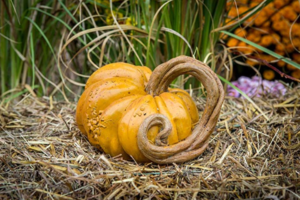
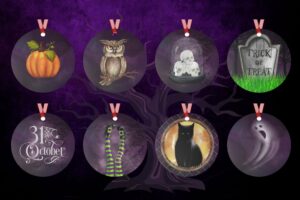
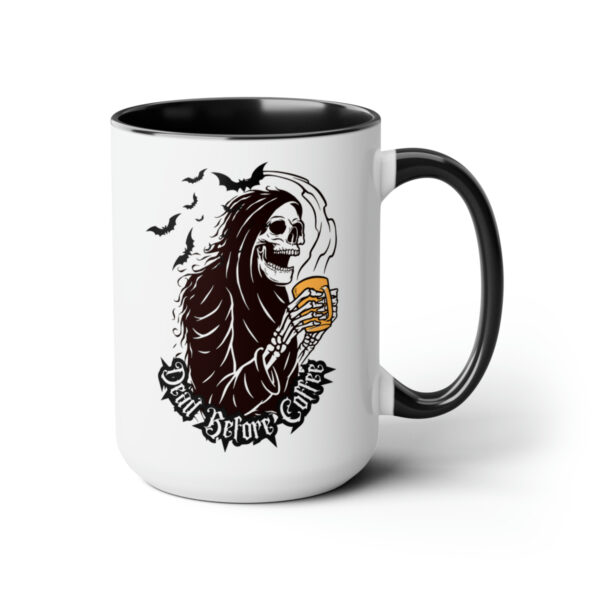
1 Comment
Leave your reply.